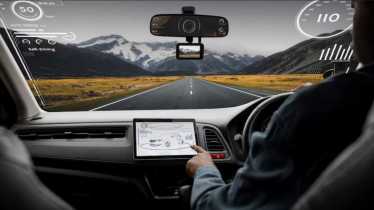By: Siddhartha Bal, Director – Autonomous Mobility, iMerit
As the fastest-growing economy in the world, India is undergoing massive technological innovations. It would be an understatement to say how the country is utilizing the power of tech innovations to unlock the power of digital transformation. Now more than ever, technological innovations have become a strategic priority, especially in the auto sector, as we edge closer to digital transformation. These technological innovations have pushed autonomous driving from the realm of fiction to that of reality. Automation is no doubt creating gigantic disruptions in the automobile industry.
For almost a century, human-driven vehicles have shaped our lives. However, as advanced innovations exceed our technological expectations, it has become imperative for us to be agile in what we do. Unlike human-driven vehicles, autonomous vehicles have a lot of factors that make them more preferential, as they are driven by the integration of cutting-edge technologies like AI, radar technology, and microprocessor capacity.
Additionally, there are numerous factors that are making driverless vehicles a priority over conventional vehicles. These are:
- Reduction in deaths caused by accidents
- Reduction in traffic congestion
- Drop in harmful emissions
- Elimination of stop-and-go wave
- Reduction in travel time
- Improvement in lane capacity
Autonomous vehicles are broadly divided into 6 levels around the world, in which Level 0 refers to no automation and Level 5 refers to full automation. Currently, we have achieved automation till Level 3 which is awaiting legal approvals around the world.
How do autonomous vehicles work?
Autonomous vehicles function on advanced sensors, actuators, complex algorithms, machine learning systems, and powerful processors to execute software to travel from initial point to destination. Autonomous vehicles are incorporated with smart technologies that work as the eyes of cars to gather data about their position corresponding to other vehicles, in addition to other necessary information such as road structure, and travel time. These smart-systems then calculate all data points to help a car navigate.
There are several types of technologies that can help to collect data, including RADAR, audio sensors, camera sensors, and LiDAR technology. While camera technology uses the images which are captured every microsecond to collect data, for the vehicle to perform, the LiDAR technology on the contrary makes use of sensors.
In autonomous vehicles, the LiDAR sensors are placed on the roof of the vehicles which rotate 360 degrees to emit thousands of invisible laser pulses per mile-second. These sensors are incorporated with scanners that analyze the laser pulses reflected from objects in the surrounding environment. Using an onboard computer powered by advanced AI models, the annotated data is converted into 3D models of the surrounding environment. The 3D model further helps the vehicles to scan the environment to precisely detect road lanes and moving objects in real-world scenarios. Along with creating the 3D model, the sensors are capable of measuring the time taken to travel to the object and back and determine the distance of the object from the vehicle.
To enable complete driver assistance in autonomous cars, auto manufacturers have to rely on innovative technologies like Advanced Driver Assistance Systems which are also known as ADAS. These systems consist of Vision-based systems and RADAR sensors. While short distance RADAR sensors can help in identifying blind spots – objects very close to the car that might be missed by other types of sensors, longer range RADAR-based systems assist in low visibility conditions to cover longer ranges, vision-based systems aid in parking assistance, recognizing traffic signs, and identifying lane capacity.
Although RADAR sensors and Vision-based systems can provide complete automation, the concept of automation is impossible without data about the nearby objects. As a matter of course, Advanced Driver Assistance Systems are equipped with LiDAR. Hence, for a vehicle to function by itself, all these sensors have to work collaboratively.
LiDAR is emerging as a leading solution for autonomous vehicles as it provides a variety of advantages, which are as follows:
- Accurate results – LiDAR technology produces high-end results in terms of accuracy. The laser pulses help in the detection of the smallest of objects to create detailed 3D models which make it easier for the computer systems to identify the object.
- Faster analysis– LiDAR technology sends out and analyzes laser reflections in mili-seconds making it possible to scan a larger area in a short period of time, fairly reducing the risk of accidents and stopping.
- Change in time zone – LiDAR technology is equipped with active illumination sensors which does affect the performance of the technology in different time zones. As a result, this technology can offer remarkable performance both during the day and night.
- Low cost – Although this technology can produce pinpoint results by scanning a larger area in a short period of time, this technology is quite affordable and easily accessible than other mapping technologies.
It goes without saying that LiDAR technology will soon emerge as the future of autonomous vehicles. As digital technologies become more advanced, LiDAR technology will also evolve to produce better results for autonomous vehicles. As an outcome of improvement in LiDAR technology, the market share of this technology will increase. Since this technology uses AI and machine learning models and aims to eliminate the intervention of human intelligence, we will also witness a steep rise in government interference as a consequence of safety concerns associated with AI. Nevertheless, LiDAR technology holds immense potential to build a bright future for autonomous vehicles.
Disclaimer: Views expressed are personal and do not reflect the official position or policy of Financial Express Online. Reproducing this content without permission is prohibited.
